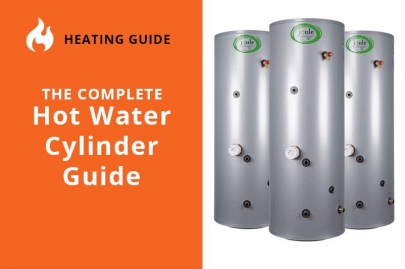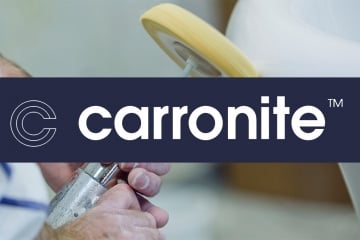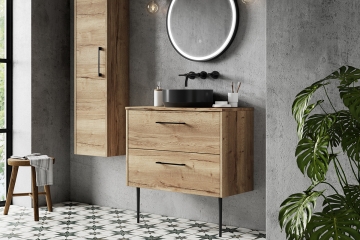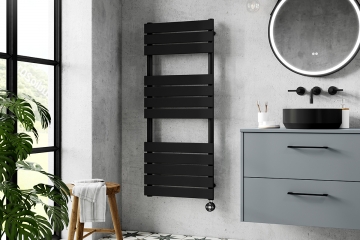Hot Water Cylinder Guide

Hot Water Cylinder Guide
Hot water cylinders are one of the most important features in any modern home but are probably something that you haven't given much thought to. A hot water cylinder is responsible for storing hot water and keeping it warm until it's needed, at which point it supplies taps, baths, showers and any other appliance that requires hot water. Despite serving a seemingly simple purpose, there are a wide range of different styles and sizes for you to choose from. Which cylinder type you need will depend on your boiler type, as well as how much hot water you require (determined by your home size and personal habits). Hot water cylinders are grouped into two primary sets, open vented and unvented, but within these categories there are a large number of different designs. This hot water cylinder guide will help you determine which type of cylinder you require for your property.
Unvented Cylinders
Unvented cylinders are designed for use with system boilers and utilise mains water pressure, meaning you won't need to install a header tank in your loft in order for gravity to circulate water around your property. The higher water flow of unvented cylinders means they are able to quickly provide a greater amount of hot water to appliances, ideal for items that require a constant flow, such as power showers. Due to not needing gravity to supply your hot water, an unvented hot water tank can be situated anywhere you wish, making them more versatile and giving you more space wherever else you need it. Unvented cylinders are most popularly manufactured using high quality stainless steel, making them a sturdy and reliable choice for your property and one that is usually protected by lengthy guarantees.
Open Vented Cylinders
Vented cylinders are designed for use with regular boilers (also known as heat only boilers) and require a cold water tank, most commonly placed in the loft of a property. The cold water tank is filled by the mains water supply, then uses gravity to supply the hot water cylinder, which in turn feeds hot water to the rest of the property. Vented cylinders are a popular choice due to their reliability and lack of a pump, and their ability to function with the majority of conventional heating systems. They do demand that you have space in your property for a cold water tank, either in the loft or situated high in the top storey. Vented cylinders are most commonly made using copper, which varies in thickness depending on the quality of unit. This thickness is measured in grades; the majority of domestic cylinders will be Grade 3, while cylinders with a heavier workload will usually be Grade 1 or 2. Higher grade copper is more resistant to corrosion, meaning a copper cylinder can last for decades.
Direct Cylinders
Direct cylinders are heated by an element contained within the unit, usually an immersion heater. The element heats the water directly, much like in a kettle, hence the direct cylinder name. As there is no need for a separate boiler, direct cylinders can be electric only, making them an ideal choice for homeowners who want to rely on electricity exclusively. This is especially true for those who have solar panels, wind turbines or other electrical generators on their property. The cylinder heats the water, then supplies it to whichever outlet needs it, such a bath or shower. Larger direct cylinder models will usually have more than one heating element inside, to ensure your water is heated as thoroughly as in their smaller counterparts. There are both vented and unvented variants of direct cylinders, meaning they are compatible with most property layouts. Direct cylinders are most effective when used in properties without central heating, such as in flats, where they are sufficient for supplying taps and showers.
Indirect Cylinders
Indirect cylinders take heat from an external source, such as a separate boiler or solar panels. This heat energy is transferred to the water in the cylinder via an internal heat exchanger but the heat is acquired externally, hence their name. Despite being designed to use external heat sources primarily, certain indirect cylinders may be outfitted with immersion heaters to ensure they can provide enough hot water, even when circumstances prevent their external sources from performing. Whether or not these immersion heaters are included as part of your initial purchase will depend on the brand and design. Due to taking their heat from external sources, indirect cylinders will usually be capable of heating water more quickly than a direct cylinder, making them a good choice if you want to use hot water less frequently. Like direct cylinders, indirect cylinders can be purchased in both unvented and vented variants.
Thermal Store Cylinders
Thermal store cylinders essentially operate in the direct opposite manner to standard hot water cylinders. Standard cylinders transfer heat into the cylinder via a coil, thus warming the water that is stored in it. In contrast, thermal store cylinders heat water that is held in the tank, then pass cold water through a coil in the cylinder in order to heat it before it continues on to wherever it's needed. Thermal Store cylinders are highly versatile; the water in the cylinder can be heated in a number of different ways, such as wood burning stoves or stoves with back boilers, reducing overall fossil fuel usage. A wood burning stove will generally be sufficient to keep the cylinder warm enough but you may require an extra immersion heater to supply your cylinder in certain circumstances
Solar Cylinders
Solar cylinders are a special kind of cylinder that is designed specifically for use in homes with solar heating. These cylinders are unique, with the solar panels acting in a similar way to a traditional boiler. A special mixture of water and glycol circulates through pipes in the panels, heating the fluid before returning to the cylinder, passing through an internal coil to heat the water. By continually circulating this fluid from solar panel to water cylinder, heat is constantly transferred and water is kept warm. If solar panels are insufficient to meet your hot water needs, it's possible to purchase a cylinder with an additional coil, allowing you to heat water with an immersion heater; these are generally known as "Twin Coil Cylinders".
Related Posts
The patented, triple-layer Carronite reinforcement system has been a staple in the bath industry for 40 years. We dig into the truth behind the strapline...
Choosing between floor-standing and wall-mounted vanity units should be straightforward, but it's actually one of those decisions where both options have genuine advantages and some proper drawbacks that aren't immediately obvious until you've lived with them.
When you're replacing radiators or planning a heating system, the sheer number of options can be a bit baffling. Panel, convector, column, designer - what's the actual difference, and does it matter?




